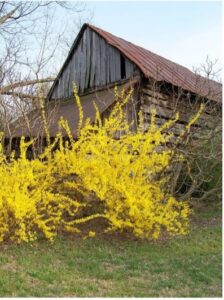What’s Blooming?
go.ncsu.edu/readext?784666
en Español / em Português
El inglés es el idioma de control de esta página. En la medida en que haya algún conflicto entre la traducción al inglés y la traducción, el inglés prevalece.
Al hacer clic en el enlace de traducción se activa un servicio de traducción gratuito para convertir la página al español. Al igual que con cualquier traducción por Internet, la conversión no es sensible al contexto y puede que no traduzca el texto en su significado original. NC State Extension no garantiza la exactitud del texto traducido. Por favor, tenga en cuenta que algunas aplicaciones y/o servicios pueden no funcionar como se espera cuando se traducen.
Português
Inglês é o idioma de controle desta página. Na medida que haja algum conflito entre o texto original em Inglês e a tradução, o Inglês prevalece.
Ao clicar no link de tradução, um serviço gratuito de tradução será ativado para converter a página para o Português. Como em qualquer tradução pela internet, a conversão não é sensivel ao contexto e pode não ocorrer a tradução para o significado orginal. O serviço de Extensão da Carolina do Norte (NC State Extension) não garante a exatidão do texto traduzido. Por favor, observe que algumas funções ou serviços podem não funcionar como esperado após a tradução.
English
English is the controlling language of this page. To the extent there is any conflict between the English text and the translation, English controls.
Clicking on the translation link activates a free translation service to convert the page to Spanish. As with any Internet translation, the conversion is not context-sensitive and may not translate the text to its original meaning. NC State Extension does not guarantee the accuracy of the translated text. Please note that some applications and/or services may not function as expected when translated.
Collapse ▲One of the first plants to bloom in springtime is Forsythia. Its showy, golden yellow flowers brighten landscapes before its leaves appear. It can grow 8 to 10 feet tall and 10 to 12 feet wide. It has an erect habit, with most cane growing upright. Some canes are weeping, creating a wild; unkempt look. Larger varieties may become quite large and unruly, which may require more maintenance. While it is not one of our natives, it is easily transplanted, drought tolerant, relatively pest and disease-free, and adapts well to our Southern climate. It grows rapidly and is long-living.
The flowers are perhaps one of its best features. They will last for two or three weeks, unless killed by cold. The yellow flower color varies with varieties, ranging from pale to deep yellow. The flowers are 1 1/4 to 1 1/2 inches long and wide, bell-like and produced in clusters. They bloom on last year’s wood. For this reason, it is best to prune in spring after flowers to prevent cutting off buds with next year’s flowers. When pruning, it is best to thin out the older branches at the bast of the plant. This allows the more vigorous branches to take over. Shearing is discouraged as it takes away from the natural growth of the plant. Forsythia can be cut back to the ground, if needed, and will produce all new growth. The leaves appear shortly after bloom. In the fall, they may turn slightly yellow, maroon or purple, depending upon the cultivar and the amount of sunlight received.
In the landscape, Forsythia is used as a specimen or in shrub borders and groupings. They can be used to create a hedge in which they may be planted with a 3 or 4 foot spacing between plants.
Variety information can be found at the Forsythia plant detail page.





